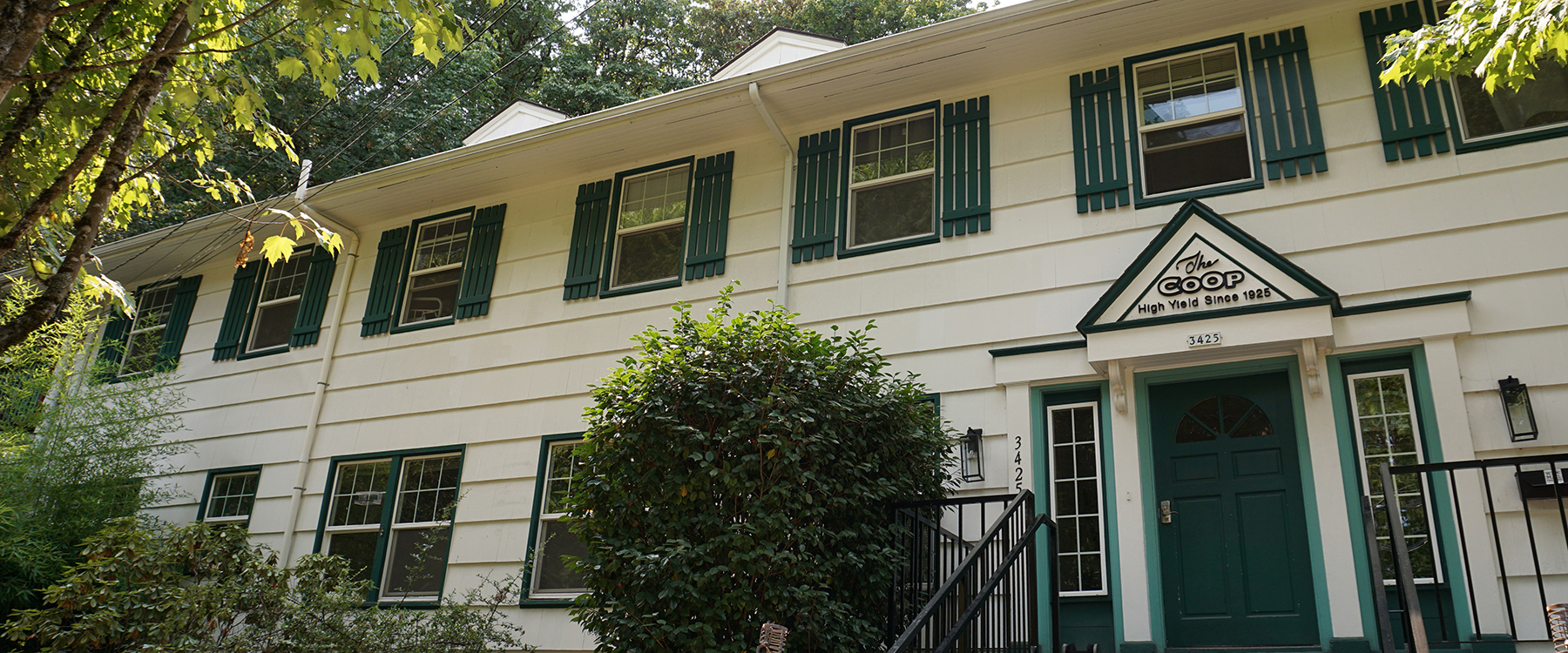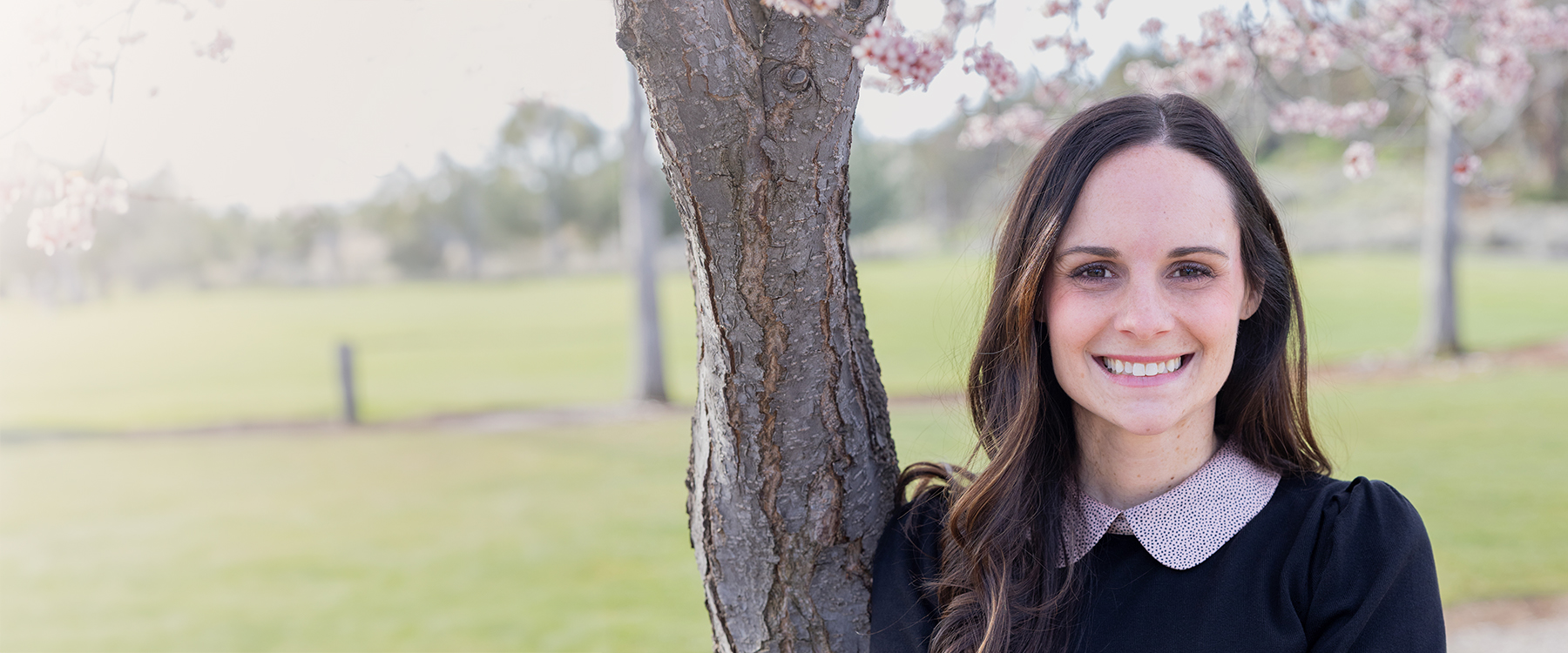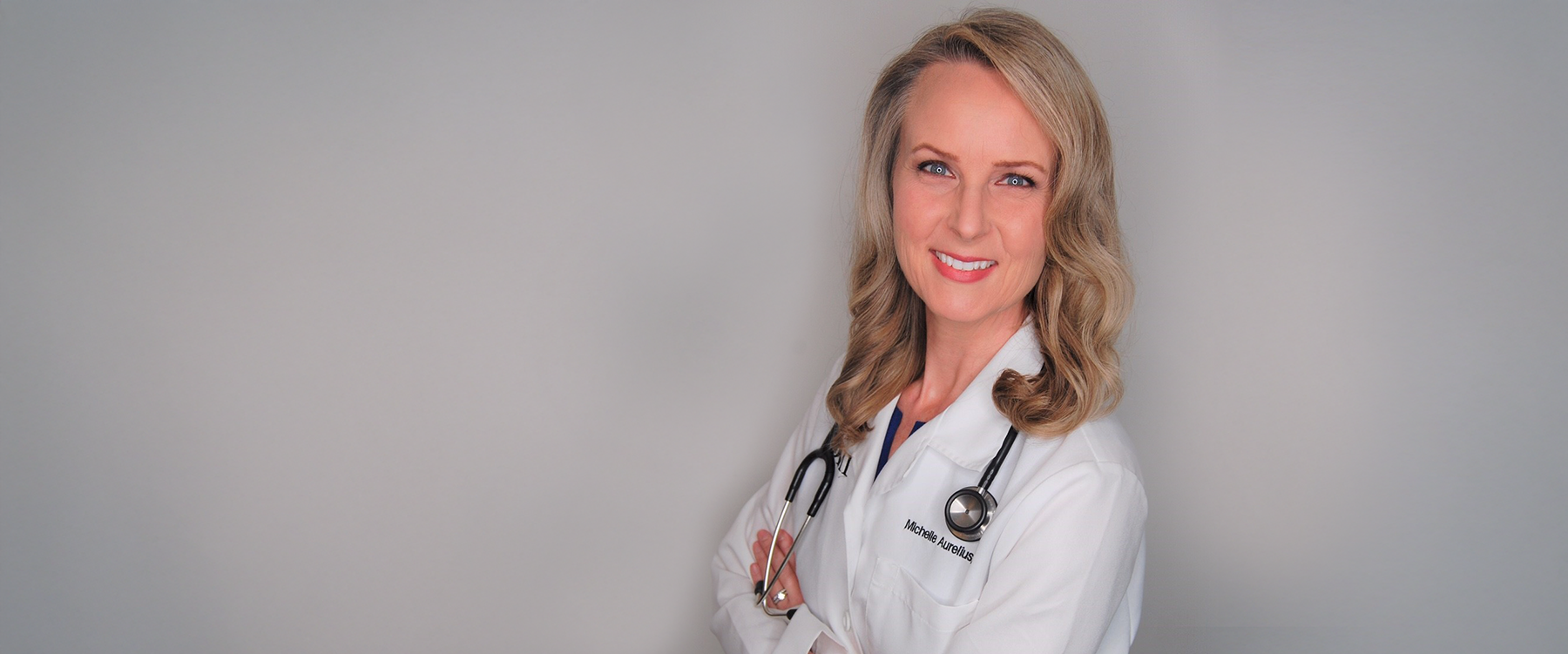When Nicole Andeen, M.D. ’12, flew in to interview for graduate school at the OHSU School of Medicine, she had made no overnight arrangements and found Portland shut down by snow.
Then she remembered learning about the Marquam Hill Cooperative on the OHSU website.
“I walked up Marquam Hill and I knocked on the co-op door and asked them if I could stay the night,” Andeen says.
The co-op did not usually host interviewing medical students, but one of the 23 bedrooms was available. Andeen was welcomed for the night and completed her interview. After her acceptance at OHSU, Andeen applied and was accepted as a co-op resident.
“My whole impression of OHSU as a medical school was biased by getting to meet the people in the co-op and having their wonderful hospitality,” Andeen says.
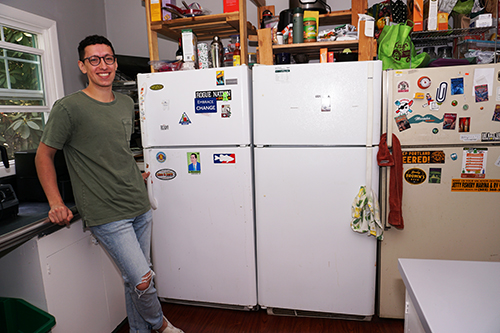
The Marquam Hill Cooperative, located slightly uphill from the OHSU campus, is the 23-bedroom home of a self-run, self-governed nonprofit student cooperative. Though it initially housed only medical students, any graduate-level OHSU student pursuing a career as a health professional is now welcome to apply for long or short-term housing.
The Marquam Hill Cooperative started as the Gamma Nu Chapter of the Theta Kappa Psi medical fraternity in 1925. In 1950, the house changed fraternal affiliation to the Beta Nu Chapter of Phi Beta Pi, and in 1988, the house dropped its affiliation with the fraternity and opened to all graduate students attending OHSU.
Deceased OHSU alumnus William J. Brady, M.D. ’58, lived in the house from 1954-57. He and his wife shared their first date at a house pajama party. Brady loved his experience as a house resident and joined the house board of directors in 1961, serving as president from 1971 until his death in 2017. Under Brady’s leadership, the house was established as a nonprofit corporation, becoming the Marquam Hill Cooperative in 1996. Brady’s daughter, Mary Agnes Prosser, now oversees the co-op’s five-member board of directors, which always includes at least two student residents.
“Living in the co-op was like having a family to come home to. Even many years after graduating, we still get together.”
Gabriel Andeen, M.D. ’12, M.P.H. ’12
The co-op’s community annually consists of OHSU students from all academic class years and may include students from any of the OHSU schools of Medicine, Nursing, Dentistry and Public Health.
Co-op applicants are attracted by the proximity to campus and low rent, referred to as dues. Dues include utilities and some basic provisions: paper products, cleaning supplies and kitchen staples. Co-op residents are equally excited to find a community of built-in friends, all working toward similar goals and bonding over shared activities.
More than one married couple spent the early years of their relationship as co-op housemates, including Nicole Andeen and her husband Gabriel Andeen, M.D. ’12, M.P.H. ’12.
“Living in the co-op was like having a family to come home to,” Gabriel says. “Even many years after graduating, we still get together.”
Rachel Meek, D.M.D. ’22, learned about the co-op on the OHSU School of Dentistry’s incoming student Facebook page. She was thrilled when her application to the co-op was accepted.
“I didn’t know anybody in Portland,” Meek says. “I felt that built-in family and friends — it was the support system that I needed when I went to school.”
Meek recalls a time when she broke a glass coffee carafe while washing it and deeply cut her hand. Suddenly there were five housemates rushing to help her.
“If there’s any place to accidentally hurt yourself doing dishes, this is the place!” she says. “I’m surrounded by 20-plus almost-doctors taking care of me.”
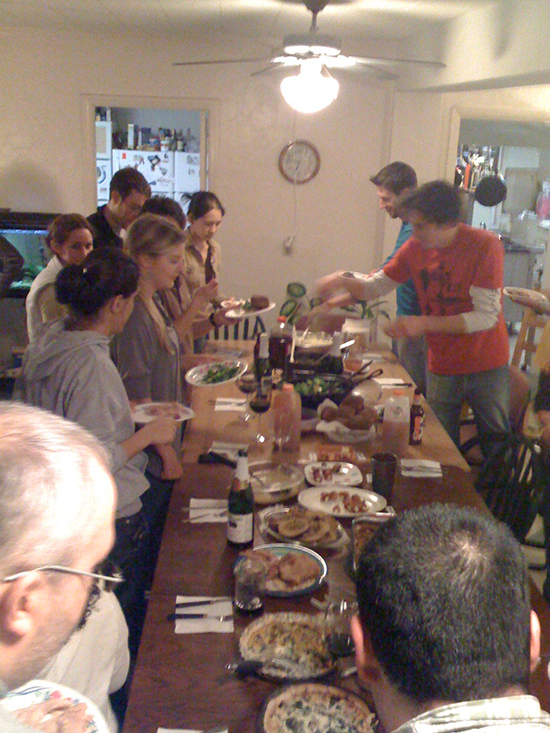
The co-op’s kitchen remains the center of community bonding. A large central island countertop is surrounded by an industrial-sized range and shared cabinets, with 12 full refrigerators spilling into an adjacent pantry. A tradition passed down over the years: Food meant to be shared is regularly placed on the center island.
Current co-president of the co-op, fourth-year student Spencer Burt, M.D. ’25, appreciates the food sharing tradition, which often includes baked goods as well as eggs from hens housed in the backyard chicken coop built during the Andeens’ residency.
An additional bonus of living at the co-op: Students at the early stage of their studies live alongside students who are further along in many of the programs, creating a natural peer mentorship.
Burt says, “Before we started clinicals, a few of the older students sat us down and wrote out how to make a presentation on our rotations.” He adds, “They wrote it down on a pizza box.”
Living in community requires agreements about chores, responsibilities and a willingness to work through differences that arise. Nicole Andeen is still guided by the you-plus-one concept: Clean up after yourself, plus one other person.
“You’ve eaten together, cleaned dishes and carried out the trash, brushed your teeth together,” Nicole Andeen says. “You gain a different appreciation, regardless of whatever faults you might see.”
Gracefully sharing space is still a driving principle. “The goal is to have a place where everyone gets along and is around friends,” Burt says.
Burt welcomes co-op alumni to a BBQ this Oct. 7 and hopes to host another alumni BBQ next year. A 100-year anniversary celebration is set for 2025, with plans still in development. Alumni are invited to contact current residents at [email protected] for more information.
